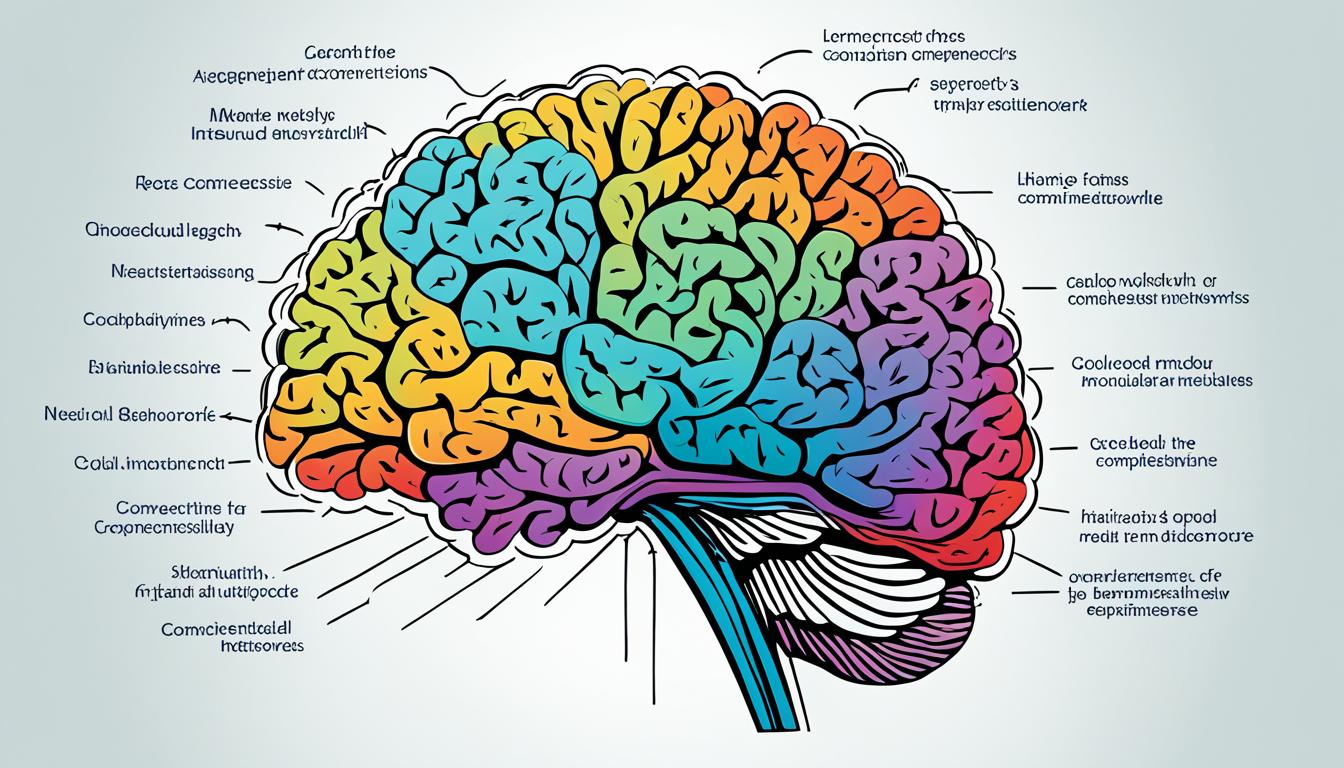Modular systems in deploying neural networks offer several advantages. These systems mimic the structure and functions of the human brain while drawing inspiration from corporate network structures. They enhance efficiency, scalability, and versatility in AI applications, including image and speech recognition, healthcare, robotics, financial analysis, and natural language processing. By breaking down complex tasks into specialized modules, modular systems improve efficiency, allow for easy scalability, and enhance robustness and versatility.
Key Takeaways:
- Modular systems in deploying neural networks enhance efficiency, scalability, and versatility.
- These systems break down complex tasks into specialized modules.
- Modular systems find applications in various domains, including image and speech recognition, healthcare, robotics, financial analysis, and natural language processing.
- They improve efficiency, allow for easy scalability, and enhance robustness and versatility in AI applications.
- Modular systems mimic the structure and functions of the human brain and corporate network structures.
The Brain as an Inspiration
The human brain, with its billions of interconnected neurons, serves as the inspiration for modular systems in AI. The brain’s modular structure, with specialized regions dedicated to specific functions, serves as a blueprint for modular neural networks. These networks aim to replicate the brain’s modularity by breaking down complex tasks into specialized modules that work together to achieve a collective output and vision. This approach allows for efficient collaboration between modules and enables the network to handle increasingly complex tasks.
“The brain’s modular structure serves as a blueprint for modular neural networks.”
Modular systems draw inspiration from the brain’s ability to efficiently process information and perform various tasks through specialized regions. Like the brain, modular neural networks divide complex tasks into smaller, manageable modules that specialize in specific functions. These modules communicate and exchange information, just as different regions of the brain collaborate to complete complex cognitive processes. By emulating the brain’s modular organization, AI systems can achieve remarkable efficiency and versatile performance.
Unlocking the Power of Modularity
- Modular systems leverage the brain’s modular structure to enhance efficiency, scalability, and functionality.
- Modular neural networks break down complex tasks into specialized modules for optimal performance.
- Collaboration between modules enables the network to handle increasingly complex tasks.
- These systems draw inspiration from human cognition to improve AI capabilities.
The Advantages of Modular Systems
Modular systems offer several advantages over monolithic approaches:
- Enhanced Efficiency: By delegating specific tasks to specialized modules, modular systems optimize information processing and improve overall performance.
- Scalability: Modular networks enable the addition of new modules without disrupting the existing system, allowing for seamless scalability and adaptability.
- Robustness: Due to their modular structure, these networks can continue functioning even if one module encounters an issue, ensuring system reliability.
- Versatility: Modular systems find applications across various domains, from image and speech recognition to healthcare, robotics, financial analysis, and natural language processing.
Overall, modular systems inspire AI developers to create intelligent networks that replicate the brain’s efficiency and versatility in handling complex cognitive tasks. By emulating the brain’s modular structure, AI systems unlock new possibilities and push the boundaries of technological innovation.
The Concept of Modularity
Modularity in neural networks refers to the division of the network into specialized modules or units, which are responsible for specific tasks or functions. Each module functions as an “expert” in its domain, similar to how individuals in an organization specialize in particular areas of expertise. This modular approach allows for a division of labor, just as different specialists handle distinct functions within a company.
The modules in a neural network communicate and exchange data, akin to how different departments collaborate and share information within a corporation. This modular organization enhances the network’s efficiency and effectiveness, as it harnesses the power of division of labor to optimize performance. By breaking down complex tasks into smaller, specialized modules, the network can tackle a variety of tasks simultaneously and achieve a higher level of accuracy and speed in decision-making.
“Modularity in neural networks brings about a division of labor, allowing specialized modules to efficiently handle specific tasks, much like how different departments collaborate in an organization.”
Imagine a neural network that is designed to perform image recognition. With a modular structure, the network can have separate modules dedicated to detecting edges, identifying shapes, and recognizing objects. Each module becomes an expert in its respective area, contributing to the overall image recognition process. This division of labor not only enhances efficiency but also simplifies troubleshooting and maintenance. If a module encounters an issue, it can be isolated, allowing other modules to continue functioning without disruption.
Furthermore, the modularity of neural networks enables flexibility and scalability. New modules can be added or replaced easily, allowing the network to adapt to changing requirements or incorporate advancements in technology. This scalability ensures that the network can evolve as new data becomes available or as tasks become more complex.
Modular neural networks are not limited to a specific domain or application. The concept of modularity can be applied to various AI fields, including image and speech recognition, natural language processing, healthcare, robotics, and financial analysis.
By leveraging the concept of modularity, neural networks can achieve more efficient and effective results while handling complex tasks. This approach mimics the division of labor seen in human organizations and enables AI systems to reach new levels of performance and adaptability.
How Modular Neural Networks Work
Modular neural networks operate through a system of specialized modules that perform specific tasks or subsets of tasks. These modules act as experts in their respective domains, working collaboratively by exchanging information and facilitating seamless communication. Through this interconnected structure, the network ensures the efficient flow of data and enables seamless collaboration among the modules. The hierarchical organization of the network further enhances its capabilities by utilizing a layered architecture.
The hierarchical structure of modular neural networks is reminiscent of the natural learning patterns observed in the human brain. By leveraging interconnected modules, these networks can handle increasingly complex tasks through a bottom-up approach. Lower-level modules contribute their knowledge and capabilities to the higher-level modules, enabling specialization and growth within the network.
Just as a corporation comprises different departments responsible for specific functions, modular neural networks are composed of specialized modules dedicated to distinct tasks. This division of labor allows each module to focus on its expertise, promoting efficiency and optimizing the network’s performance. The interconnected nature of these modules closely resembles how different departments collaborate and share information in an organizational setting.
The following diagram showcases the hierarchical structure and flow of information in a modular neural network:

| Module Level | Functionality |
|---|---|
| Level 1 | Low-level tasks |
| Level 2 | Integration of level 1 outputs |
| Level 3 | Integration of level 2 outputs |
| Level 4 | Final outputs and decision-making |
The table above illustrates the different levels of specialization within a modular neural network. Each level builds on the outputs of the previous level, leading to the generation of final outputs and facilitating decision-making. This hierarchical structure allows the network to handle complex tasks through the collective intelligence and expertise of interconnected modules.
Advantages of Modular Neural Networks
Modular neural networks offer enhanced efficiency, scalability, robustness, and versatility compared to traditional monolithic networks. These advantages make them a powerful tool in various AI applications.
One key advantage is the enhanced efficiency that modular neural networks bring to information processing. By delegating specific tasks to specialized modules, these networks streamline the computational workload and optimize resource allocation. This division of labor allows for faster and more accurate processing, resulting in enhanced overall efficiency.
The scalability of modular neural networks is another significant advantage. These networks can easily accommodate the addition of new modules without disrupting the existing network architecture. This flexibility enables the network to grow and adapt to evolving requirements, making it highly scalable and capable of handling complex tasks.
Furthermore, the modular design enhances the robustness of these networks. If one module encounters an issue or fails, the remaining modules can continue functioning, ensuring the overall system’s resilience and uninterrupted operation. This robustness makes modular neural networks reliable and less susceptible to failures and disruptions.
Finally, modular neural networks offer versatility across various domains. From image and speech recognition to healthcare, robotics, financial analysis, and natural language processing, these networks can be applied in a wide range of applications. The versatility of modular neural networks allows businesses and researchers to leverage their capabilities across diverse fields, making them a valuable asset in different industries.
Examples of Application
- Image and speech recognition: Modular neural networks excel in recognizing and categorizing visual and auditory input, enabling applications such as facial recognition, object detection, voice command interpretation, and transcription services.
- Healthcare: These networks find applications in medical imaging analysis, disease diagnosis, personalized treatment recommendation, and drug discovery.
- Robotics: Modular neural networks empower robots to perform complex tasks such as object manipulation, autonomous navigation, and dynamic environment interaction.
- Financial analysis: These networks can analyze vast amounts of financial data for stock market predictions, risk assessment, fraud detection, and algorithmic trading.
- Natural language processing: Modular neural networks enable more accurate and context-aware language translation, sentiment analysis, chatbot interactions, and text-to-speech conversion.
Through their enhanced efficiency, scalability, robustness, and versatility, modular neural networks offer significant advantages over traditional monolithic networks, making them an essential component of modern AI systems.
Applications of Modular Neural Networks
Modular neural networks have a wide range of applications across various domains, including image and speech recognition, healthcare, robotics, financial analysis, and natural language processing. These intelligent systems, built on the principles of modularity and specialization, offer groundbreaking solutions in their respective fields.
Image and Speech Recognition
Modular neural networks excel in image and speech recognition tasks, where specialized modules can be trained to recognize specific objects, faces, or phonetic patterns. By leveraging the power of modular design, these networks achieve high accuracy and reliability in identifying and classifying visual and auditory stimuli.
Healthcare
In the healthcare industry, modular neural networks mimic the diagnostic expertise of medical specialists. Through the analysis of medical imaging data, these networks provide accurate and personalized treatment recommendations. By harnessing the capabilities of specialized modules, they contribute to improved patient outcomes and enhanced medical decision-making.
Robotics
Modular neural networks revolutionize the field of robotics by enabling robots to perform a wide range of tasks. From navigation to object manipulation, robots powered by modular systems exhibit enhanced versatility and adaptability. This allows them to operate in diverse environments and carry out complex actions with precision and efficiency.
Financial Analysis
In the realm of financial analysis, modular neural networks play a crucial role in processing vast amounts of data. These networks can analyze market trends, perform stock trading, assess risks, and detect fraudulent activities. Their ability to handle complex financial data sets makes them instrumental in gaining valuable insights and making informed decisions.
Natural Language Processing
Modular neural networks drive advancements in natural language processing applications. By integrating specialized modules, these networks enable more accurate and context-aware chatbots and language translation services. They understand and interpret human language with increased precision, improving communication and facilitating seamless interactions between humans and machines.

Modular neural networks offer immense potential in various domains, leveraging their capabilities in image and speech recognition, healthcare, robotics, financial analysis, and natural language processing. By embracing a modular approach, AI systems can tackle complex challenges effectively and deliver innovative solutions that benefit society as a whole.
Bridging Biology and Technology
Modular neural networks represent an interdisciplinary approach that bridges biology and technology. These networks leverage the efficiency and specialization seen in both natural and organizational networks to create intelligent systems capable of excelling in complex tasks. By mimicking the dynamic organization of the brain, modular neural networks can switch between expertise hats, allocating expertise weighting based on the needs of the moment to achieve goal optimization. They provide a simulated environment based on specific needs and optimize the overall efficiency and effectiveness of AI systems.
Conclusion
The application of modular AI systems has the potential to revolutionize the efficiency and scalability of neural network deployment. By breaking down complex tasks into specialized modules, these systems offer a range of advantages, including enhanced efficiency, scalability, robustness, and versatility. Modular AI systems find practical applications in various domains such as image and speech recognition, healthcare, robotics, financial analysis, and natural language processing.
One of the key benefits of a modular approach is the ability to develop, test, and deploy individual modules independently, enabling collaborative and parallel development within AI teams. This promotes faster innovation and ensures efficient utilization of resources. As the field of AI continues to evolve, modular AI systems will play a crucial role in facilitating further advancements and rapid development.
Modular AI systems represent a significant step towards bridging the gap between biology and technology. By drawing inspiration from the brain’s modular structure and corporate network formations, these systems optimize efficiency and effectiveness in complex tasks. Their ability to allocate expertise weighting dynamically and optimize goal-oriented processes makes them invaluable in creating intelligent systems that excel in diverse applications.
FAQ
What are the advantages of modular systems in deploying neural networks?
Modular systems in deploying neural networks offer several advantages, including enhanced efficiency, scalability, robustness, and versatility.
How does the brain serve as an inspiration for modular systems in AI?
The human brain with its modular structure, dedicated regions for specific functions, serves as a blueprint for modular neural networks in AI.
What does modularity in neural networks refer to?
Modularity in neural networks refers to the division of the network into specialized modules or units, which handle specific tasks or functions.
How do modular neural networks work?
Modular neural networks consist of specialized modules that communicate and exchange data to ensure collaboration and information flow. They often have a hierarchical structure.
What are the advantages of modular neural networks?
Modular neural networks enhance efficiency by delegating specific tasks to specialized modules, offer scalability, robustness, and versatility across various domains.
In which areas do modular neural networks find applications?
Modular neural networks find applications in image and speech recognition, healthcare, robotics, financial analysis, and natural language processing.
How do modular neural networks bridge biology and technology?
Modular neural networks leverage the efficiency and specialization seen in both biological and organizational networks, creating intelligent systems that excel in complex tasks.
What is the role of modular AI systems in neural network deployment?
Modular AI systems enhance efficiency and scalability by breaking down complex tasks into specialized modules, facilitating innovation and rapid development in AI.



















